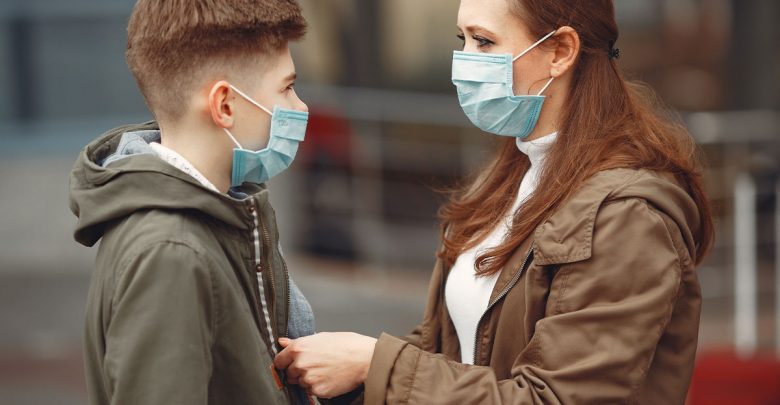Undiagnosed T1D at Increased DKA Risk During Pandemic
Changes in healthcare access and care-seeking behavior has led to an increase in severe DKA and delayed diagnosis for new type 1 patients

Disruption is the New Normal
No part of our daily lives seems unaffected by the global coronavirus pandemic — schools are operating online, many businesses continue to have their employees work remotely, and most people have changed how they do simple things, such as buying groceries.
Even how we approach getting healthcare looks completely different than it did just last year.
In addition to wider access to telehealth medicine options, many hospitals are reporting fewer people being admitted for strokes, heart attacks, and other non-COVID-19 related ailments.
Worrying Trends Concerning Diagnosis Statistics
Unsurprisingly, these changes seem to be affecting the type 1 diabetes community as well. New reports out of Germany, the UK, and some anecdotal accounts from the US show a disturbing new trend indicating that the pandemic is keeping parents from seeking prompt treatment for their ill but undiagnosed children.
German Diagnosis Data
Researchers in Germany recently released a report showing just how much of an impact the pandemic has had on new type 1 diagnoses and the extent and severity of diabetic ketoacidosis (DKA).
The report presented information on 532 children and adolescents diagnosed with type 1 across Germany between March 13 and May 13 of this year. They compared this data against diagnoses made during the same time period in 2019 and 2018.
Of the patients diagnosed this year, 44.7% were in DKA. In 2019 and 2018, the percentage of children and adolescents admitted with DKA was only 24.5% and 24.1%, respectively. That represents almost a two-fold increase in young patients presenting with DKA at diagnosis.
Worst still, 19.4% of young and adolescent patients in 2020 presented with severe DKA. This percentage is 1.55 times higher than the percentage of patients seen with severe DKA in 2018.
UK Diagnosis Data
In the UK, official figures show a marked decrease in the total number of T1D diagnoses made between March and June of this year compared to the same time period in 2019. According to the BBC, 31.25% fewer children were diagnosed in 2020.
When the German and UK Data are considered together, these trends seem to indicate that children are receiving delayed treatment and diagnosis for their diabetes during the pandemic. But the exact reason for this delay is difficult to pinpoint.
Factors that Increase in DKA and Delayed Diagnosis
Just as with the decreased number of people being admitted to hospitals for things like heart attacks and strokes, the reason for the lower number of T1D diagnoses and higher incidence of DKA upon diagnosis is likely due to a combination of factors.
Fear of Seeking Treatment
The hospital is the last place anyone wants to end up when your city or town is experiencing a surge in coronavirus cases. This is doubly true for parents of young children who risk, in addition to infection, not being able to stay together with their child once they are admitted.
There are certainly many examples of fear of infection and hospitalization keeping parents from seeking prompt medical care for a sick child, but none may be more striking than the case of a 15-year-old living in Italy.
According to a brief published in The Journal of Pediatrics, the teen had been suffering from frequent urination and thirst for over a week. But despite the fact that her parents were both physicians and that they suspected type 1, they were reluctant to get her care. After waiting another two days for her parents to act, the teen finally tasted her own urine to prove it was sweeter than it should be.
Luckily, this was enough to convince her parents to overcome their fear and take her to the hospital where it was determined she had only mild DKA and elevated blood sugar. For many children, especially those whose parents are unfamiliar with the symptoms of type 1 and how fast DKA can progress, a positive outcome like this is less likely.
Reduced Access to Healthcare Facilities
While fear likely plays a role to some degree in all cases of delayed diagnosis, there have been many instances throughout the world where access to healthcare has been greatly reduced due to lockdowns, a lack of hospital space, or governments and facilities cautioning against seeking treatment except for true emergencies.
It isn’t hard at all to imagine how this reduced access to healthcare and the attention of a qualified doctor could lead to problems in promptly diagnosing type 1.
Example: An 8-year-old California boy
In the same Journal of Pediatrics brief, the case of an 8-year-old boy from California was described. After persistent vomiting and stomach pain for a few days, the boy’s parents tried to contact their health insurance urgent care line but never received a response. They were eventually able to get a hold of a doctor but never saw that doctor in person and they only prescribed symptomatic treatment and fluids.
Two days later, after their son started having trouble breathing, the parents called 911. But once first responders were on the scene, they cautioned the family against seeking additional medical care due to the risk of exposure. No lab tests were done at the time and the boy remained at home until the next morning when his mental state had degraded enough to prompt his parents to bring him straight to the emergency room.
After five days of symptoms and multiple attempts to get medical help, the boy was finally admitted to the hospital in severe DKA with a blood glucose of 873.
Preoccupation with COVID-19
In many cases, type 1 diabetes presents with a wealth of symptoms that resemble viral infections, something that is especially problematic during a viral pandemic. When this is the case it can be difficult to get a diagnosis even when fear and access don’t get in the way of seeing a doctor.
Example: A 17-year-old Indiana girl
This was the exact scenario a 17-year-old teen from Indiana faced after experiencing severe weight loss, frequent urination, and extreme thirst for weeks. Because the girl was also suffering from shortness of breath, a sore throat, and a cough, her parents took her to a respiratory outpatient clinic.
Despite her other debilitating symptoms, the doctors were most interested in determining if she had COVID-19. After her coronavirus, flu, and strep tests all came back negative, they sent her home with antibiotics.
Three days later, her shortness of breath became so severe that she was taken to the emergency room. Thanks to a previous negative COVID-19 test and another round of labs, the doctors were able to determine she was in severe DKA with elevated blood sugars and made the right decision to treat her with insulin.
An Exacerbated Problem
Unfortunately, stories of children with severe DKA upon diagnosis are not new. Type 1 diabetes has long been a disease that often goes unnoticed for too long or is misdiagnosed until severe DKA has occurred.
The fact that the current pandemic is making it harder for many to get the treatment they need is only exacerbating a long-established problem.
That’s why, right now, it is more important than ever to continue to educate the public about type 1 symptoms, to remind healthcare providers to look for those symptoms, especially in pediatric patients, and for people to continue to advocate for themselves and their loved ones.







